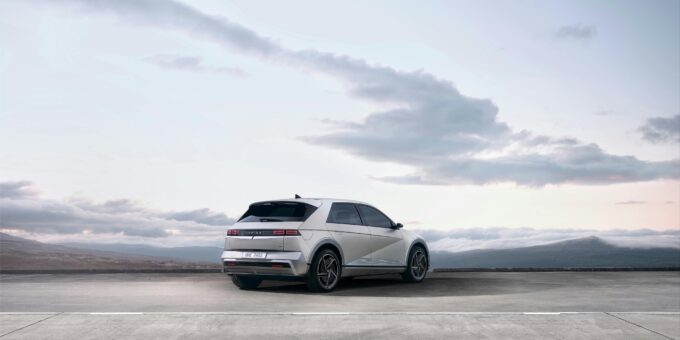
The future of driving is electric, and the revolution is already underway. Electric and hybrid vehicles are reshaping transportation, blending cutting-edge technology with sustainability to address the challenges of climate change, rising fuel costs, and environmental degradation. From quiet, emission-free rides to instant torque and impressive fuel efficiency, these vehicles are offering a glimpse of what’s possible when innovation meets responsibility.
In this article, we’ll explore the rise of electric and hybrid vehicles, their benefits, challenges, and how they’re set to dominate the roads of tomorrow.
What Are Electric and Hybrid Vehicles?
Electric and hybrid vehicles represent a significant shift from traditional gasoline-powered cars. While both are alternatives to internal combustion engines, they operate differently:
- Electric Vehicles (EVs): Powered entirely by electricity stored in batteries, EVs produce zero emissions and rely on electric motors for propulsion.
- Hybrid Vehicles: Combine a gasoline engine with an electric motor to optimize fuel efficiency and reduce emissions. Hybrids typically recharge their batteries through regenerative braking and the engine, while plug-in hybrids (PHEVs) can be charged externally.
Both options prioritize efficiency, sustainability, and innovation, making them ideal for eco-conscious drivers.
The Rise of Electric and Hybrid Vehicles
Electric and hybrid vehicles are no longer niche products—they’re mainstream. Global automakers are pivoting to electrification, with many pledging to phase out gasoline engines within the next two decades. This surge is driven by:
- Government Regulations: Stricter emissions standards and carbon reduction goals.
- Technological Advances: Improvements in battery efficiency, range, and charging speed.
- Consumer Demand: Increased awareness of environmental issues and the cost benefits of EVs and hybrids.
By 2030, experts predict that electric vehicles will make up more than 50% of global car sales, with hybrids continuing to bridge the gap for consumers transitioning from gasoline.
Benefits of Electric and Hybrid Vehicles
Electric and hybrid vehicles come with a host of advantages that appeal to individuals, businesses, and governments alike.
- Environmental Benefits: EVs produce zero tailpipe emissions, significantly reducing greenhouse gases. Hybrids also emit less CO2 than traditional gasoline cars.
- Cost Savings: Lower fuel costs and reduced maintenance expenses (thanks to fewer moving parts in EVs) lead to long-term savings.
- Performance: Electric motors deliver instant torque, resulting in smooth and powerful acceleration.
- Energy Independence: EVs reduce reliance on fossil fuels, especially when paired with renewable energy sources like solar or wind power.
With such compelling benefits, it’s no surprise that more drivers are making the switch.
Types of Electric Vehicles (EVs)
Electric vehicles come in several varieties, each catering to different needs and preferences.
- Battery Electric Vehicles (BEVs): Fully electric, running on rechargeable batteries. Examples include the Tesla Model 3 and Nissan Leaf.
- Plug-In Hybrid Electric Vehicles (PHEVs): Combine a gasoline engine and an electric motor, with the option to charge the battery externally. Popular models include the Toyota Prius Prime.
- Fuel Cell Electric Vehicles (FCEVs): Use hydrogen to generate electricity, emitting only water vapor. The Toyota Mirai and Hyundai Nexo are leading examples.
Understanding these types can help you choose the right EV for your lifestyle.
How Hybrid Vehicles Work
Hybrid vehicles are a marvel of engineering, blending two power sources to maximize efficiency.
- Parallel Hybrids: The gasoline engine and electric motor work simultaneously to power the car.
- Series Hybrids: The gasoline engine generates electricity to power the electric motor, which drives the wheels.
- Plug-In Hybrids (PHEVs): Offer larger batteries and can operate in full-electric mode for short distances.
Each type has its own advantages, but all hybrids share the goal of reducing fuel consumption and emissions.
Battery Technology: The Heart of EVs
The success of electric vehicles hinges on advances in battery technology. Modern EVs rely on lithium-ion batteries, which offer high energy density, lightweight construction, and fast charging.
Exciting developments on the horizon include:
- Solid-State Batteries: Expected to offer greater energy density, faster charging, and improved safety.
- Recycling Innovations: Efforts to recover valuable materials like lithium, cobalt, and nickel are making EVs more sustainable.
These advancements will play a pivotal role in making EVs more affordable and practical.
Charging Infrastructure and Its Evolution
The expansion of charging networks is critical for widespread EV adoption. Today’s charging options include:
- Home Charging: Convenient but slower (Level 1 or Level 2 chargers).
- Public Fast Chargers: Rapidly growing networks like Tesla Superchargers and Electrify America.
- Workplace Charging: Encourages adoption by making EVs practical for daily commutes.
The integration of renewable energy sources into charging networks is further enhancing sustainability.
Driving Experience: Electric vs. Gasoline Cars
One drive in an electric vehicle, and you’ll notice the difference:
- Quiet Operation: EVs run silently, offering a serene driving experience.
- Instant Torque: Accelerate quickly without lag, perfect for city driving and highways alike.
- Smooth Performance: No gear shifts mean seamless acceleration and deceleration.
For many, the driving experience alone is enough reason to make the switch.
Future Trends in Electric and Hybrid Vehicles
The future of EVs and hybrids is bright, with innovations poised to make them even more appealing:
- Wireless Charging: Charging pads that eliminate cables for added convenience.
- Solid-State Batteries: Promising longer ranges and shorter charging times.
- Autonomous Driving Integration: Many EVs, like Tesla, are leading the charge in self-driving technology.
- Enhanced Range: Continued improvements in battery efficiency will reduce range anxiety.
These advancements will redefine what’s possible on the road.